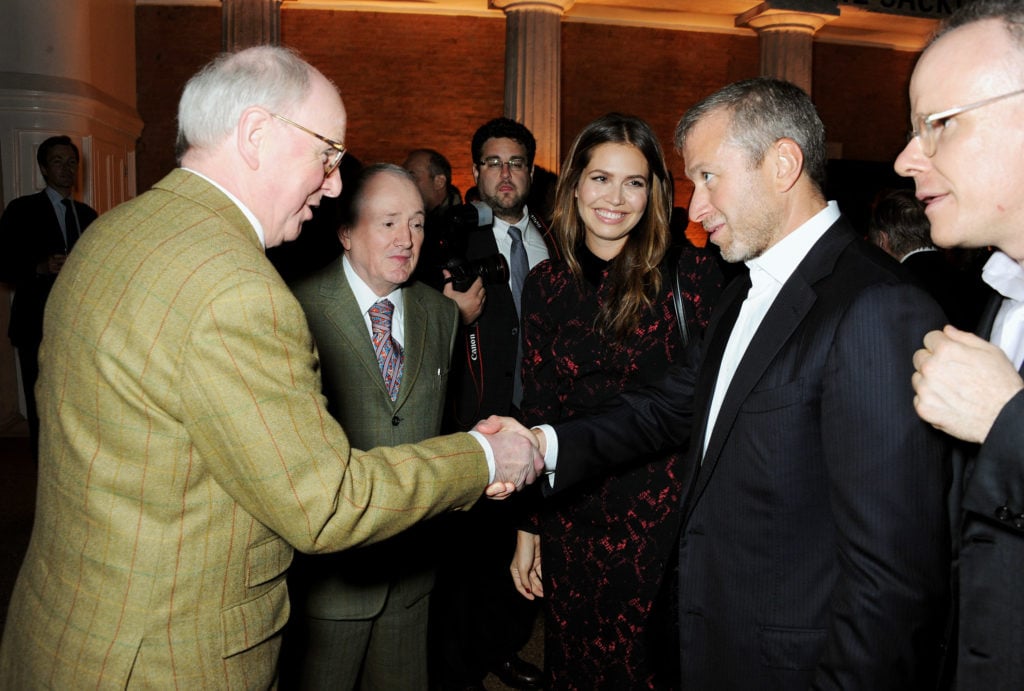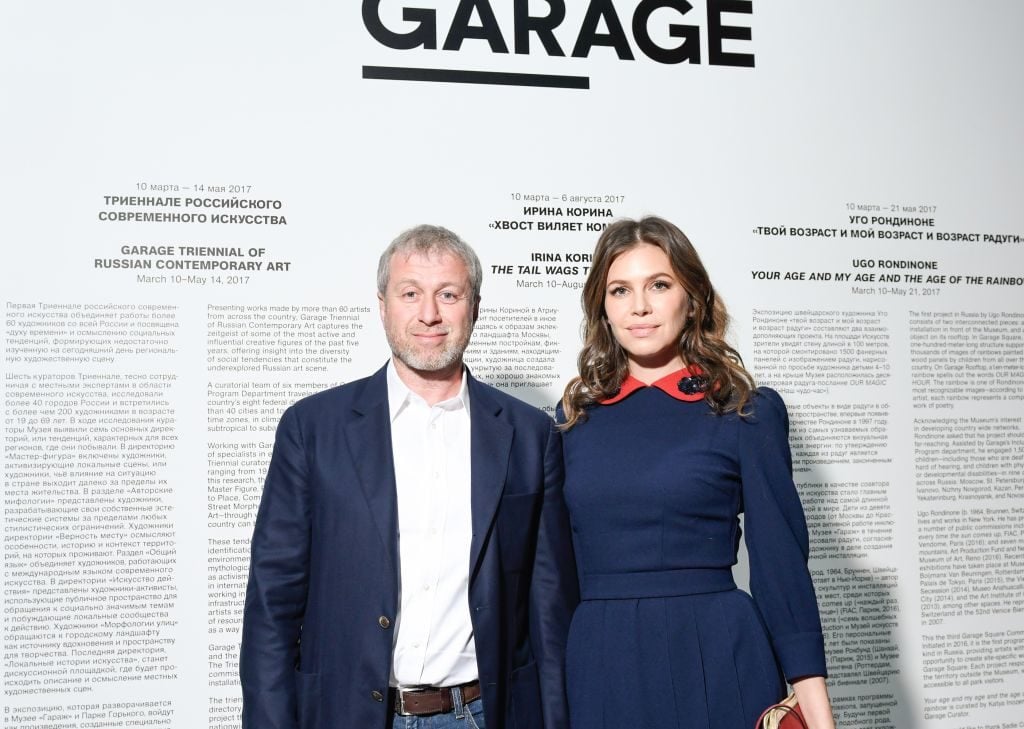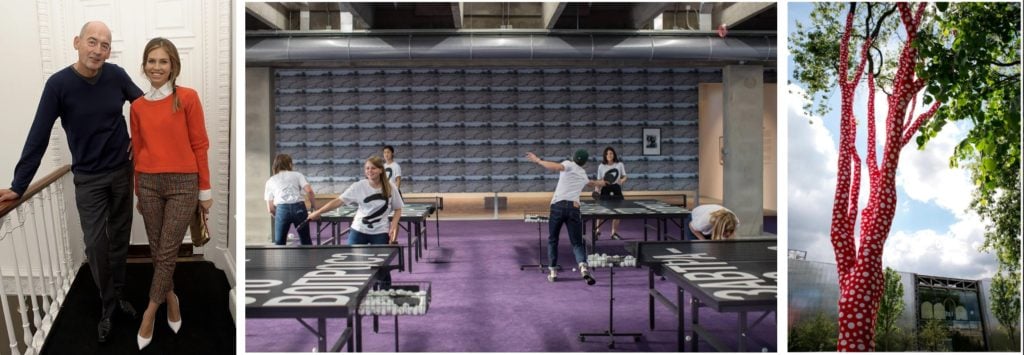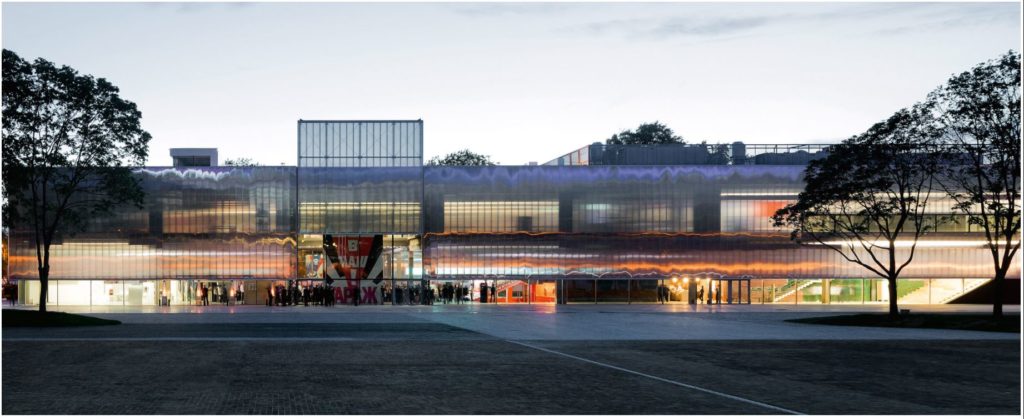Art World
A Brief History of How Dasha Zhukova and Roman Abramovich Conquered the Art World
...In happier times.

...In happier times.

Caroline Goldstein

Earlier this week, news broke that Dasha Zhukova and Roman Abramovich, one of the art world’s most deep-pocketed power couples, plan to separate after 10 years of marriage.
The divorce between Abramovich, 50, who the owns the Chelsea soccer team and is worth an estimated $9 billion, and Zhukova, 36, who sits on a bevy of museum boards and is an early investor in Artsy, could be Britain’s most expensive split ever. Together, the couple founded the Garage Museum of Contemporary Art in Moscow, and have played no small role in reinvigorating the city’s contemporary art scene.
In a statement confirming the split, the pair said they would continue to work together on joint projects. While rumors continue to fly about what caused the breakup (and the true fate of their many cultural initiatives remains unclear), we have compiled a capsule history of the notoriously press-shy couple’s rise to art-world prominence.

Roman Abramovich and Dasha Zhukova attend the preview of the spring season at the Garage Museum of Contemporary Art on March 9, 2017 in Moscow, Russia. (Photo by Team Boyko/Getty Images)
2005: The pair reportedly meets at a New Year’s Eve soirée thrown by Zhukova’s father, the Russian oil magnate Alexander Zhukov. Around this time, Abramovich—who has historically been more partial to fast cars and big boats than fine art—also dips his toes into the world of cultural philanthropy, supporting an exhibition of Russian pictorial photography at London’s Somerset House.
2006: Abramovich’s nascent art philanthropy continues with his sponsorship of a show of Max Penson’s photographs, also at Somerset House. According to reports, Abramovich’s second wife, Irina Malandrina, a former flight attendant, also begins to collect Russian art from London dealers. (The couple will go on to divorce the following year.) Zhukova, meanwhile, co-founds the fashion label Kova & T with a childhood friend, Christina Tang.

Lucian Freud’s Benefits Supervisor Sleeping (1995) and Francis Bacon’s Triptych 1976 (1976).
May 2008: Abramovich becomes the latest Russian oligarch to make major waves on the auction circuit. He snaps up Lucian Freud’s painting Benefits Supervisor Sleeping (1995) for $33.6 million (€23.9 million) at Christie’s. The huge canvas sets a record price for a work by a living artist. Less than 24 hours later, Abramovich drops a cool $86.3 million (€61.4 million) for Francis Bacon’s Triptych 1976 at Sotheby’s—setting a then-record for a postwar work of art at auction.
Summer 2008: The pair unveil their joint-venture, the Garage Center for Contemporary Culture, at a 300-guest soirée headlined by Amy Winehouse. Garage was established through Zhukova’s IRIS Foundation with funds from Abramovich and other patrons; it is initially housed in a Constructivist-era bus garage. The opening coincides with many breathless articles about Zhukova’s newly heavyweight status in the art world and the growing influence of Russian money on the international art world and market. (“A year ago few people in the art world had heard of her,” reads a profile in the New York Times.)
This is a big year for the couple: They also get married—though that fact would only become public in 2015, when a Wall Street Journal article reveals that they had wed in secret.
2009: Dasha Zhukova joins board of trustees at the Los Angeles County Museum of Art.

Garage Cover by Urs Fischer. (Beyoncé photographed by Robin Harper with hair by Kim Kimble and makeup by Sir John). Courtesy of Garage Magazine.
2011: After a brief stint at the fashion magazine POP (tabloids have a field day when she lasts only three editions), Zhukova launches the glossy Garage Magazine with a scandalous cover that pictures a Damien Hirst tattoo in a very intimate location. The magazine seeks to seamlessly blend pop culture, style, and art.
2013: Bloomberg breaks the news that the couple purchased a group of approximately 40 works by Ilya Kabakov from the collection of John L. Stewart, who spent over two years amassing the collection, reportedly valued between $30–60 million. Meanwhile, Zhukova continues to beef up the staff at Garage, hiring Kate Fowle, the former director of Independent Curators International, as chief curator.
2014: The Garage Center for Contemporary Culture is renamed the Garage Museum of Contemporary Art. Meanwhile, Zhukova—whose “infinite unquotability has earned her a kind of fame among journalists,” as the New Yorker once put it—finds herself in a place she has very consciously tried to avoid: the center of a controversy. She is roundly criticized for posing for a photograph atop an Allen Jones-inspired chair in the shape of a nude black woman. (She swiftly apologizes, saying she “utterly abhor[s] racism.”)

From left: Rem Koolhaas and Dasha Zhukova. Photo by Ben Pruchnie/Getty Images for Garage; Rirkrit Tiravanija, Tomorrow is the Question courtesy of Garage Museum; Yayoi Kusama wrapped trees. Photo: David X Prutting/ BFA for Garage Museum.
June 2015: Garage moves to a Rem Koolhaas/OMA-designed space in Gorky Park. The Modernist building opens to international fanfare with two Kusama infinity rooms, a ping-pong table by Rirkrit Tiravanija, and a slew of celebrity guests including Woody Allen and Leonardo DiCaprio’s mother. With the expansion of the museum, Zhukova continues to bolster its programming, creating the only system of grants for young artists in Russia and opening a 15,000-volume research library.
October 2015: In a nod to her molecular biologist mother, she donates $1 million to the Massachusetts Institute of Technology to create a distinguished visiting artist position. (The first recipient, announced in 2016, is Pedro Reyes.)
July 2016: Media conglomerate VICE takes a controlling stake in Garage Magazine.
August 2016: New Holland Island, a 19-acre island a 20-minute walk from the center of St. Petersburg, officially opens as both a cultural hub and one of the city’s only public parks. The development is funded to the tune of €400 million by Abramovich’s company Millhouse LLC; Zhukova is the creative director. (One particularly hard-to-believe rumor, reported by the Daily Mail, is that differing visions for the island would go on to fuel their breakup.) The island launches, unsurprisingly, with a temporary exhibition of Russian contemporary art organized by Garage.

The facade of the Garage Museum, courtesy of the Museum photo © Iwan Baan.
November 2016: Zhukova is elected to the Metropolitan Museum of Art’s Board of Trustees. (She is also a founding member of the board of New York’s forthcoming cultural center the Shed.)
2017: Timed to coincide with the centenary of the Russian Revolution, Garage Triennial of Russian Contemporary Art bills itself as the largest survey of contemporary Russian art practice. The event runs from March 10–May 14, and features 63 artists ranging from 19 to 69 years old. As reported by Page Six, the couple appear together at the opening.